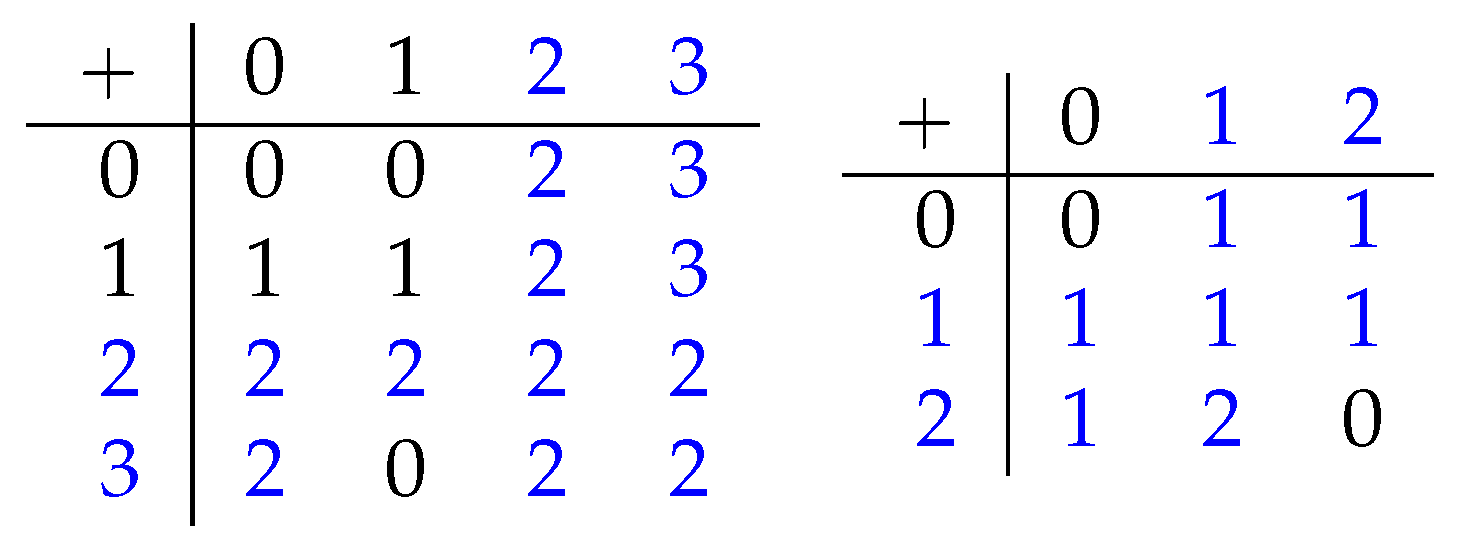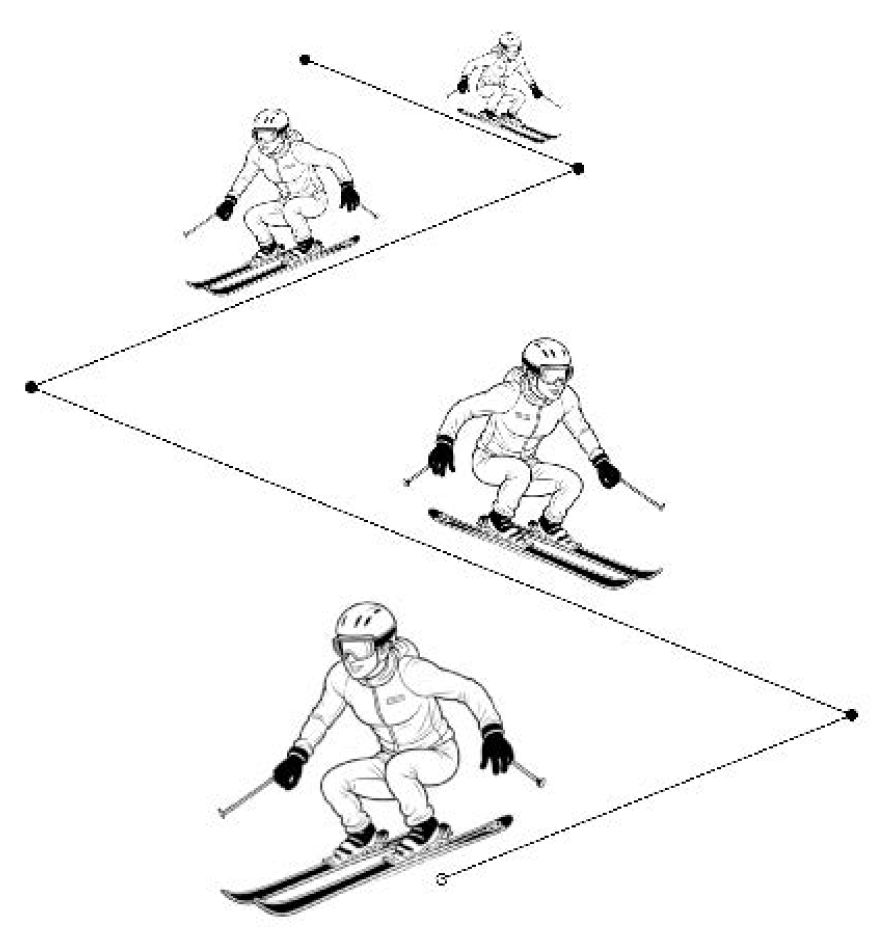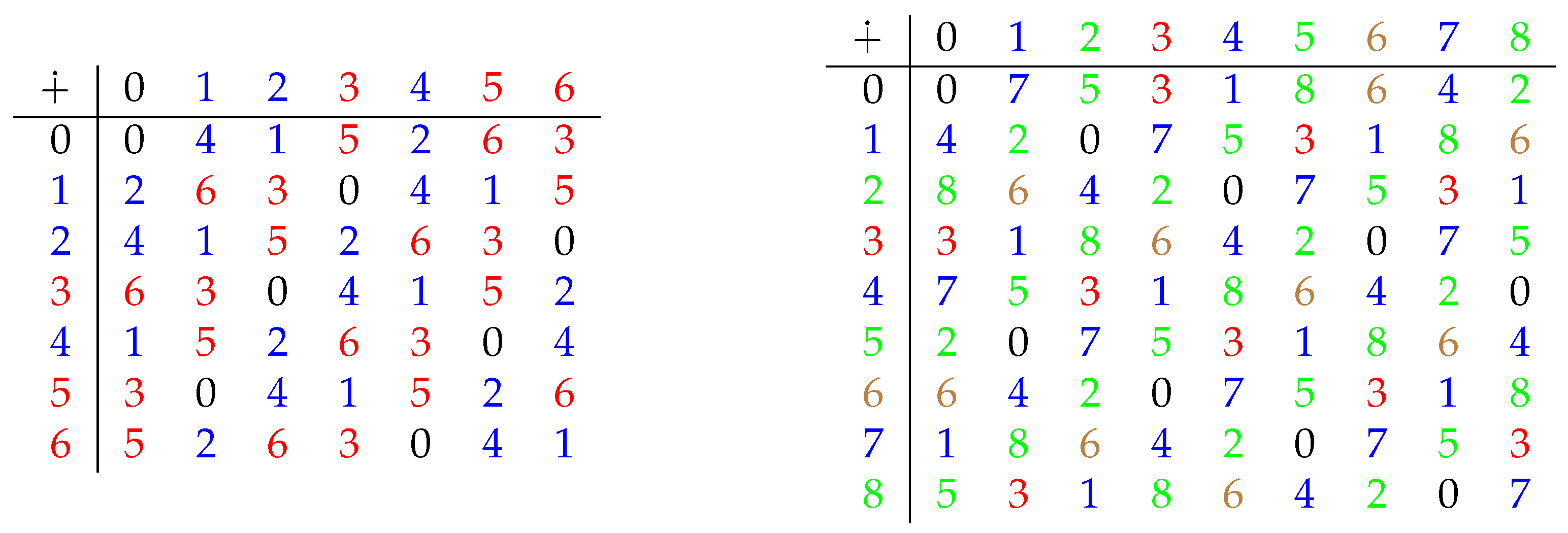Depicting Falsifiability in Algebraic Modelling
Abstract
1. Introduction
1.1. Mathematical Framework
1.2. Overview
2. Philosophical Aspects
2.1. Underdetermination
2.2. Falsifiability
2.3. Theses
3. Notions
3.1. Hemi-Associativity and Hemi-Commutativity
3.2. Hemi-Cyclicity
- + is hemi-associative and hemi-commutative;
- + is hemi-right-cyclic;
- + is hemi-left-cyclic.
3.3. Hemi-Modularity
3.4. Hemi-Permutability
4. Implications
5. Proofs for Section 3
5.1. Proofs for Section 3.1
5.2. Proofs for Section 3.2
5.3. Proofs for Section 3.3
6. Proofs for Section 4
6.1. Equivalences
- + is hemi-associative;
- + is hemi-commutative;
- + is hemi-left-modular
6.2. Assertions Assuming Modularity
- + is hemi-associative;
- + is hemi-commutative
6.3. Assertions Assuming Permutability
- + is hemi-commutative;
- + is hemi-associative;
- + is hemi-right-modular.
- + is hemi-commutative;
- + is hemi-associative;
- + is hemi-left-modular.
7. Discussion
7.1. The Eponymous Concepts
7.2. Related Mathematical Approaches
7.3. Categorical Aspects
7.4. Open Questions
8. Conclusions
Author Contributions
Funding
Institutional Review Board Statement
Informed Consent Statement
Data Availability Statement
Acknowledgments
Conflicts of Interest
References
- Quine, W. On the reasons for indeterminacy of translation. J. Philos. 1970, 67, 178–183. [Google Scholar] [CrossRef]
- Lakatos, I. Falsification and the methodology of scientific research programmes. In Philosophy, Science, and History; Routledge: New York, NY, USA, 2014; pp. 89–94. [Google Scholar]
- Popper, K.R. The problem of demarcation. In Philosophy: Basic Readings; Routledge: London, UK, 1999; pp. 247–257. [Google Scholar]
- Einstein, A.; Podolsky, B.; Rosen, N. Can quantum-mechanical description of physical reality be considered complete? Phys. Rev. 1935, 47, 777. [Google Scholar] [CrossRef]
- Schlather, M. An algebraic generalization of the entropy and its application to statistics. arXiv 2025, arXiv:2404.05854. [Google Scholar]
- McCullagh, P. What is a statistical model? Ann. Stat. 2002, 30, 1225–1310. [Google Scholar] [CrossRef]
- Hann, V.A. Disinfection of drinking water with ozone. J. AWWA 1956, 48, 1316–1320. [Google Scholar] [CrossRef]
- Hartemann, P.; Montiel, A. History and Development of Water Treatment for Human Consumption. Hygiene 2025, 5, 6. [Google Scholar] [CrossRef]
- Haag, W.R.; Hoigné, J. Ozonation of water containing chlorine or chloramines. Reaction products and kinetics. Water Res. 1983, 17, 1397–1402. [Google Scholar] [CrossRef]
- Schlather, A.; Schlather, M.; Bochynek, J. On Entropy-Driven Hemi-Inner Products. 2025. Available online: https://www.preprints.org/manuscript/202505.1526/v1 (accessed on 1 July 2025).
- Ježek, J.; Kepka, T. Modular groupoids. Czech. Math. J. 1984, 34, 477–487. [Google Scholar] [CrossRef]
- Bourbaki, N. Elements of Mathematics; Springer: Berlin/Heidelberg, Germany, 2004. [Google Scholar]
- Cho, J.; Ježek, J.; Kepka, T. Paramedial groupoids. Czech. Math. J. 1999, 49, 277–290. [Google Scholar] [CrossRef]
- Chakraborty, S. On the sensitivity of cyclically-invariant boolean functions. In Proceedings of the 20th Annual IEEE Conference on Computational Complexity (CCC’05), San Jose, CA, USA, 11–15 June 2005; pp. 163–167. [Google Scholar]
- Lehtonen, E.; Pilitowska, A. Generalized entropy in expanded semigroups and in algebras with neutral element. Semigroup Forum 2014, 88, 702–714. [Google Scholar] [CrossRef]









| Symbol | Mathematical Meaning | Interpretation and Examples |
|---|---|---|
| + | any dual operand | “adding” also in the popular or broad
sense, e.g.:
|
| G | any ensemble of objects | the ensemble
of objects of the same type
we deal with:
|
| a subset of G that contains the hemi-right-neutral elements | see ; the distinction between and is purely mathematical | |
| subset of : set of hemi-neutral elements | typical hemi-neutral elements
are “nothing” or “zero”,
but could be anything with “no
effect” or “no value” (in a very broad sense):
| |
| elements of G | important objects, e.g.,
| |
| elements of G | objects that model the
“environment”, i.e.,
that can be added to the
“product”, e.g.,
| |
| element of | hemi-neutral element that is necessary to perform a proof or to give a statement | |
| element of | sole purpose is to increase the number of objects in a mathematical term to meet the correct number of elements to apply an equation or a definition | |
| M | a function from G into any arbitrary image set | measurement or the relevant properties of an object |
| objects do not differ in important properties or in their measured values |
| HC | HA | HRC | HLC | HRM | HLM | WLM | HRP | HLP | |
|---|---|---|---|---|---|---|---|---|---|
| HC | F 3 | — | T 3 | T 3 | P 5 | P 3 | P 1 and 3 | P 6 | P 7 |
| HA | — | F 2 | T 3 | T 3 | P 5 | P 3 | P 1 and 3 | P 6 | P 7 |
| HRC | T 3 | T 3 | T 3 | T 3 | T 3 | T 3 | T 3 | T 3 | T 3 |
| HLC | T 3 | T 3 | T 3 | T 3 | T 3 | T 3 | T 3 | T 3 | T 3 |
| HRM | P 5 | P 5 | T 3 | T 3 | R 5 | R 5 | P 4 | P 6 | F 9 |
| HLM | P 3 | P 3 | T 3 | T 3 | R 5 | R 5 | P 1 | F 8 | P 7 |
| WLM | P 1 and 3 | P 1 and 3 | T 3 | T 3 | P 4 | P 1 | F 8 | F 8 | P 1 and 7 |
| HRP | P 6 | P 6 | T 3 | T 3 | P 6 | F 8 | F 8 | F 8 | F 8 |
| HLP | P 7 | P 7 | T 3 | T 3 | F 9 | P 7 | P 1 and 7 | F 8 | F 8 |
Disclaimer/Publisher’s Note: The statements, opinions and data contained in all publications are solely those of the individual author(s) and contributor(s) and not of MDPI and/or the editor(s). MDPI and/or the editor(s) disclaim responsibility for any injury to people or property resulting from any ideas, methods, instructions or products referred to in the content. |
© 2025 by the authors. Licensee MDPI, Basel, Switzerland. This article is an open access article distributed under the terms and conditions of the Creative Commons Attribution (CC BY) license (https://creativecommons.org/licenses/by/4.0/).
Share and Cite
Schlather, A.; Schlather, M. Depicting Falsifiability in Algebraic Modelling. J 2025, 8, 23. https://doi.org/10.3390/j8030023
Schlather A, Schlather M. Depicting Falsifiability in Algebraic Modelling. J. 2025; 8(3):23. https://doi.org/10.3390/j8030023
Chicago/Turabian StyleSchlather, Achim, and Martin Schlather. 2025. "Depicting Falsifiability in Algebraic Modelling" J 8, no. 3: 23. https://doi.org/10.3390/j8030023
APA StyleSchlather, A., & Schlather, M. (2025). Depicting Falsifiability in Algebraic Modelling. J, 8(3), 23. https://doi.org/10.3390/j8030023






